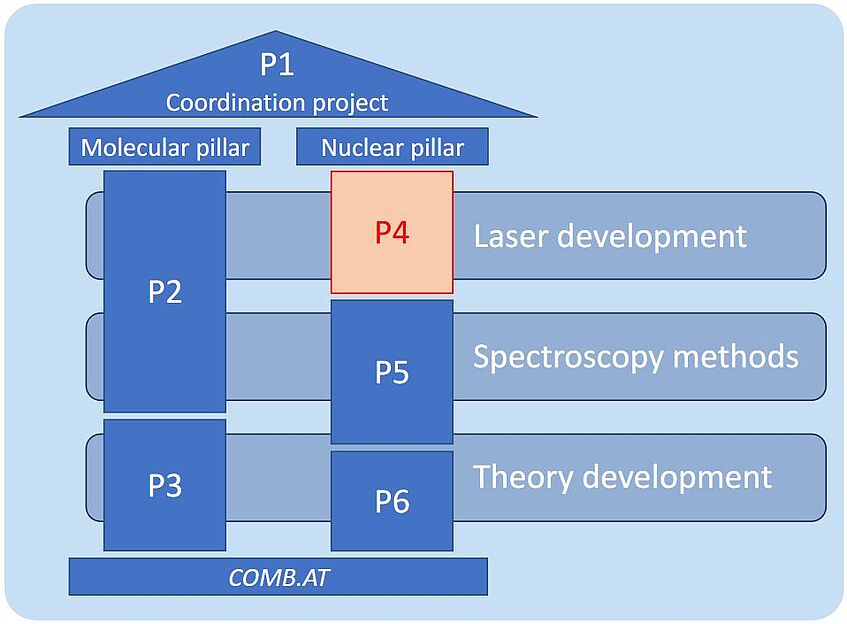P4 Ultrafast tailored light

P4 Ultrafast tailored light
The ambition of P4 is to explore the parameter space that lies between conventional femtosecond frequency combs obtained from continuous wave (CW) mode-locked lasers, on the one side, and high-energy pulsed laser amplifiers, on the opposite side. MHz-GHz fs frequency combs offer outstanding spectral resolution but at a low pulse energy, which is a problem for driving nonlinear multiphoton interactions. kHz amplifiers, due to a reduced repetition rate, excel at pulse energy scaling but have a limited spectral brightness due to a high frequency mode density. Tailoring the time- and frequency-domain formats of pulse amplification at moderate kHz repetition rates, pursued in this Special Research Program project part P4, enables us to drastically improve the spectral mode brightness and pulse peak power without raising the average power of the laser source to excessive levels. Working in close cooperation with the nuclear-clock project part P5, we aim to develop advanced schemes for the optical excitation of the 8.4-eV (148.7-nm) VUV transition in the 229Th nucleus, which overlaps with the 7th harmonic of the NIR Yb-doped laser. In addition to direct generation of optical harmonics of the fundamental laser wavelength, we will experiment with frequency-tuneable parametric UV sources to probe the frequency dependence of two-photon resonant excitation of the nuclear isomer.
